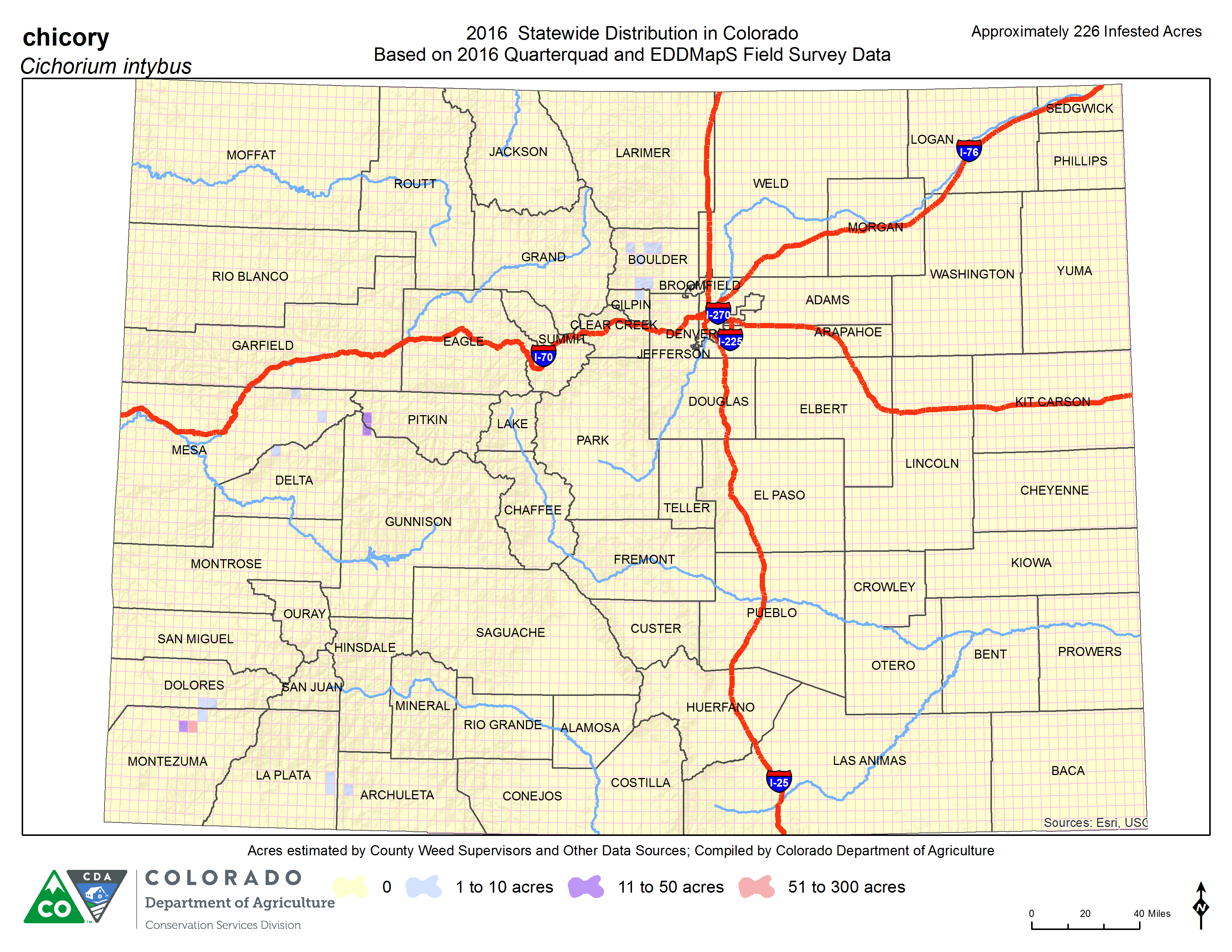Chicory
(Cichorium intybus)
Chicory is a perennial forb native to Eurasia. Plants initially appear as a basal rosette with leaves similar to the common dandelion. The leaves are lanceolate shaped and have rough hairs on the upper and lower surfaces. They are slightly lobed or dissected with toothed margins and can be 3 inches to 10 inches in length. The lobes and dissections are not opposite, like dandelions. The leaves that appear on the flowering stem are similar in shape but smaller in size. Stems can reach up to 3 to 5 feet in height and are sticky to glabrous to the touch. The plants flowering stems appear later in the growing season, producing purple to blue to white flowers. The flowers are in clusters of 1 to 3, and individual flowers are about 1 inch in diameter with toothed petals. The root system consists of a large brown taproot, which will produce a milky sap if broken. Chicory generally reproduces by seeds, that can survive up to 4 years.
